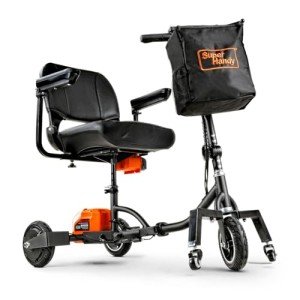Why Mobility Devices Is Your Next Big Obsession
Understanding Mobility Devices: Enhancing Independence and Quality of Life
In today's busy world, the desire for mobility is universal. Nevertheless, visit my web page or age-related obstacles can impede movement, causing a continuous look for help. Mobility devices work as vital tools to improve independence, enhance quality of life, and enable people to engage completely in their neighborhoods. This post supplies a comprehensive overview of mobility devices, including their types, functions, choice requirements, and more.
Types of Mobility Devices
Mobility devices vary from basic aids to complicated equipment, tailored to satisfy numerous requirements. Below is a table summarizing common kinds of mobility devices:
Type of Device
Description
Ideal For
Walkers
Four-legged support devices that supply remarkable stability while strolling.
People needing extra support.
Walking canes
Single or three-legged sticks that improve balance and support walking.
Those with slight mobility difficulties.
Wheelchairs
Seats installed on wheels, offered in manual and electric versions.
Individuals with restricted or no mobility.
Scooters
Electric vehicles designed for outside usage and ease of navigation.
Those who can't walk fars away.
Crutches
Devices that assist people transfer weight far from an injured leg.
People recuperating from leg injuries.
Rollators
Walkers with wheels, seats, and brakes for enhanced mobility.
Users needing rest choices while strolling.
Raise Chairs
Reclining chairs that assist users in standing up and sitting down.
Seniors or those with mobility constraints.
Mobility Scooters
Small electric vehicles for minimal mobility, frequently utilized outdoors.
People requiring support over cross countries.
Key Features of Mobility Devices
When selecting a mobility gadget, a number of key features need to be considered to make sure optimal performance and ease of use:
- Weight Capacity: Understanding the device's weight restriction is important for safety and effectiveness.
- Adjustability: Devices must be adjustable in height and width to fit the user comfortably.
- Mobility: Lightweight and foldable alternatives are necessary for users who travel or need transportation.
- Stability and Safety: Look for functions like anti-tip wheels and durable structures to enhance security.
- Reduce of Use: Simple mechanisms and user-friendly designs can make a considerable distinction in everyday use.
- Comfort: Ergonomic styles and cushioned seats can improve the user experience.
Choosing the Right Mobility Device
Selecting the best mobility device can be a challenging job. Here are some actions to assist the decision-making process:
- Assess Needs: Evaluate the individual's mobility difficulties and day-to-day activities.
- Speak with a Professional: Engage healthcare professionals who can offer suggestions based upon the person's physical condition.
- Trial Options: If possible, trial different devices to determine convenience and functionality.
- Review Budget: Consider the cost of the gadget, consisting of any extra features or adjustments needed.
- Research Options: Determine the very best brands and models by checking out reviews and comparisons.
Table: Comparative Analysis of Popular Mobility Devices
Gadget
Benefits
Disadvantages
Walkers
Outstanding stability, promotes walking.
Large, may limit movement in small spaces.
Walking canes
Lightweight, improves balance.
Might not provide adequate assistance for serious mobility concerns.
Wheelchairs
Suitable for those with considerable mobility limitations.
Can be troublesome, specifically in indoor environments.
Scooters
Great for outside usage, simple to maneuver.
Minimal indoor use, heavier.
Rollators
Supplies rest alternative, simple to move.
May need more space than standard walkers.
Lift Chairs
Comfy, helps transition from sitting to standing.
More expensive, bigger footprint.
Often Asked Questions (FAQs)
1. What is a mobility device?
A mobility device is any tool developed to assist individuals in moving and browsing their environment. This consists of walkers, wheelchairs, scooters, and crutches.
2. How do I know which mobility gadget is best for me?
Consider your specific mobility difficulties, physical capabilities, and way of life requirements. Consulting with healthcare professionals can likewise supply customized suggestions.
3. Are mobility devices covered by insurance?
Many insurance plans, including Medicare, may cover particular mobility devices. It's crucial to talk to your insurance coverage supplier for specific coverage details.
4. Can I lease a mobility gadget instead of purchasing one?
Yes, many medical supply shops and drug stores offer leasings for mobility devices. This alternative is advantageous for individuals with momentary mobility concerns.
5. How can I maintain my mobility device?
Routine maintenance is important. It consists of cleaning up the device, looking for wear and tear, and guaranteeing all parts are working correctly.
The Impact of Mobility Devices on Quality of Life
Mobility devices substantially enhance the lifestyle for individuals with restricted mobility. They foster self-reliance, encourage social interaction, and boost access to necessary services and leisure activities.
- Increased Independence: Users can browse their neighborhoods, go to events, and engage in pastimes without relying on others.
- Social Engagement: Mobility devices help with involvement in social events, thereby combating sensations of isolation.
- Enhanced Safety: Devices supply stability and reduce the threat of falls, promoting user confidence.
Mobility devices are more than just tools for motion; they are entrances to independence and quality living. By understanding the different types of mobility aids available, their key functions, and factors to consider for choosing the ideal gadget, people can make educated choices about their mobility requires. Eventually, the right mobility device can result in a more active, satisfying life. Whether it's a walker, wheelchair, or scooter, the ideal choice contributes significantly to boosting the mobility and self-reliance of users.
